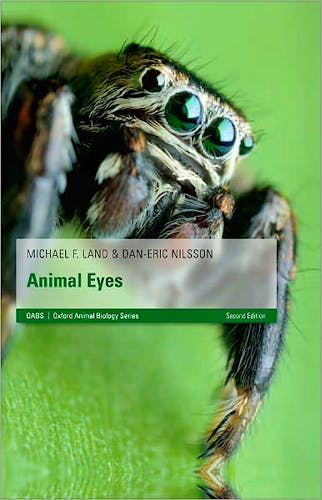

No hay productos en el carrito



Animal Eyes (Oxford Animal Biology)
Land Michael
2ª Edición Mayo 2012
Inglés
Tapa blanda
288 pags
442 gr
16 x 24 x 2 cm
ISBN 9780199581146
Editorial OXFORD
LIBRO IMPRESO
-5%
47,43 €45,06 €IVA incluido
45,61 €43,33 €IVA no incluido
Recíbelo en un plazo de
2 - 3 semanas
Description
This is a comprehensive account of all known types of animal eyes. Taking diversity of optical mechanisms as a framework, it also discusses aspects of structure and function of eyes, including visual ecology, design philosophy, properties of light critical to vision, factors in eye adaptation and capabilities of a wide variety of eye types.
Table of Contents
1 The origin of vision 1
The first eyes 1
What is an eye? 4
Why and from what did eyes evolve? 6
The course and pace of eye evolution 7
Did eyes evolve once or many times 10
2 Light and vision 16
The nature of light 16
Light intensity 19
Contrast 24
Wavelength and colour 24
Polarization 29
3 What makes a good eye? 33
Fundamentals 33
Resolution 36
Sensitivity 47
4 Aquatic eyes: the evolution of the lens 56
Evolutionary origins 56
The pin-hole eye of Nautilus 57
Spherical lenses 59
Lenses with refractive index gradients 60
Eyes of fish and cephalopods 63
Matching eye to environment 66
Eyes with non-spherical lenses 69
5 Lens eyes on land 72
A new optical surface 72
Basic optics of cornea and lens 73
Variations on the lens/cornea theme in land vertebrates 81
Amphibious eyes 93
Invertebrate eyes with corneal optics 94
6 Mirrors in animals 104
Mirrors in eyes 104
The physical optics of animal reflectors 114
Uses of multilayer reflectors in structures other than eyes 118
7 Apposition compound eyes 125
Origins 125
A little history: apposition and neural superposition 127
Basic optics 131
Ecological variations in apposition design 142
8 Superposition eyes 156
Introduction - the nature of superposition imagery 156
Refracting superposition 159
Superposition and afocal apposition 168
Reflecting superposition 172
Parabolic superposition 176
9 Movements of the eyes 178
How humans acquire visual information 179
Are other animals like us? 183
Insect flight behaviours seen as eye movement 186
Why not let eyes wander? Some consequences of image motion 187
Exceptions: rotational scanning by one-dimensional retinae 193
Principal symbols used in the text 201
References 202
Index 215
Authors
Michael F. Land obtained a BA in Zoology from Cambridge his PhD in Neurophysiology from University College London. He was Research Fellow at University of California, Berkeley (1967-1971), before moving to the University of Sussex where he was a Lecturer and then Professor of Neurobiology (from 1984 to present (now Emeritus)). He also held Visiting Fellowships in Eugene Oregon (1980), Australian Nation University Canberra (1982-84), and Duke University Marine Laboratory in Beaufort, NC (1993). He was elected to the Royal Society of London in 1982.
Dan-Eric Nilsson obtained his BSc in Biological Sciences from Goteborg University and his PhD in Structural Biology from University of Lund. He was Research Fellow at the Australian National University Canberra (1983-4) and then the University of Lund (1984-1989). He stayed at Lund as a Lecturer (1989-1995) then Professor of Zoology (from 1995). He was elected to the Swedish Academy of Sciences, Stockholm in 2002, and to the German Academy of Natural Sciences, Leopoldina in 2005.
© 2026 Axón Librería S.L.
2.149.0